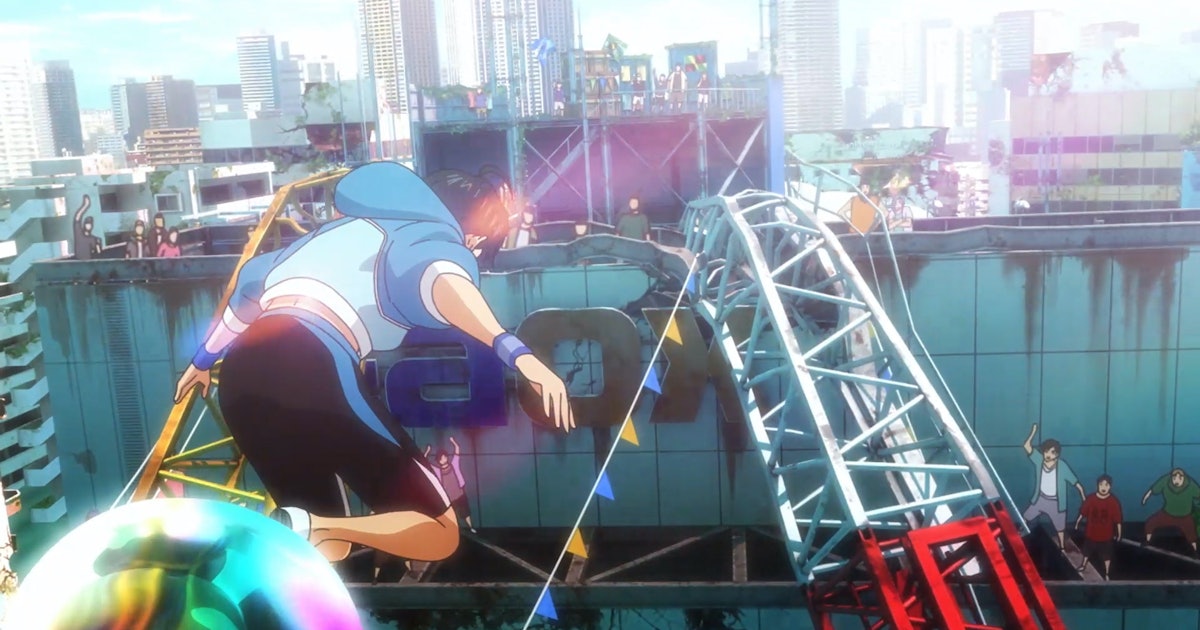
Bubble, Netflix’s latest anime effort, is a who’s who of anime talent. It’s helmed by Tetsuro Araki, director of the first seasons of Attack on Titan, from a script by Psycho-Pass and Fate/Zero writer Gen Urobuchi, character designs by Death Note co-creator Takeshi Obata, and a theme song from popular singer Eve.
Sadly, that pedigree does not automatically make a good movie. As thrilling as it is to see the camera move around like a roller coaster during stunning parkour sequences, the visuals get bogged down by a convoluted story with too much reliance on exposition, and paper-thin characters with little agency or development.
WHAT’S YOUR FAVORITE TIME-TRAVEL MOVIE? Click here to help us rank all the ones on Netflix.
The film takes place five years after a catastrophe flooded Tokyo and enclosed the city in a giant bubble that distorts gravity. Though most people chose to leave, Tokyo quickly became a playground for the many children left behind. Now the ruins of Japan’s former capital have become an obstacle course in a dangerous new sport, “Tokyo Battlekour,” a race where kids climb the ruins, evade dangerous floating bubbles, and compete to gain supplies like food, beer, and fuel.
The actual plot focuses on Hibiki, the best battlekour racer there is, whose sensitivity to sound leads him to a mysterious girl he names Uta (“song” in Japanese). She quickly becomes part of his racing team, an ace at navigating the bubble fields, and possibly the key to undoing the catastrophe.
Without a doubt, the biggest strength of the film is its visuals. Studio Wit has spent the past decade building a name for themselves as one of the most impressive anime studios around: Whether it’s turning Attack on Titan into a pop-culture juggernaut, making an acclaimed adaptation of the popular manga Vinland Saga, or last year’s surprisingly excellent Ranking of Kings, the studio is adept at using the language of animation to create unique shows. Bubble is their first wholly original concept since 2013’s Hal, and it proves how far the studio has come.
Tetsuro Araki and his team give us dynamic camera movements that swirl and jump around with the characters, seamlessly mixing 2D and 3D animation in sequences that feel like the evolution of the 3D maneuver sequences in Attack on Titan. The first time we see Hibiki in action, where he effortlessly navigates floating debris, bubbles, and violent competitors, is an awe-inspiring moment that could only be done in animation.
The larger-than-life action is accentuated by the rousing mix of operatic and rock music provided by Hiroyuki Sawano, Japan’s answer to Hans Zimmer. And even in quiet moments the camera often freezes on the faces of the protagonists, highlighting their features and making them look like characters in a gorgeous light novel cover.
But the visuals can’t really sustain the meandering plot, which is convoluted to the point where the story pauses every few minutes for a new round of exposition. Every 15 minutes or so, a new character brings the action to a pause to explain something the other person clearly already knows, making the scenes awkward and forced, clearly engineered to clue audiences in.
The writing is even worse when it comes to the characters, who are barely more than archetypes. Uta may be essential to the story, and parallels to The Little Mermaid try to make her tale a tragic romance, but she ends up coming across as a mere plot device meant to serve Hibiki’s story, without agency and literally voiceless. Bubble includes a surprising amount of representation in a medium that still lacks it, but the characters are just too flat to care about.
Bubble features some of the best action sequences this year, animated or otherwise, but if you want an anime film inspired by a Western fairy tale that actually builds upon its inspiration and delivers a powerful and poignant story, you’re better off watching Mamoru Hosoda’s Belle instead.
Bubble is streaming on Netflix now.